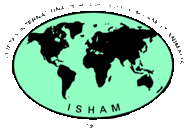|
| |||||||
|
2000 Reseaech Association with New Jersey Mold Inspection Services 2005 | |||||||
NJ Mycological Inst Main | Join the NJMI-Application | Lab NJMI |
FUNGAL EYE INFECTIONS
|
Fungal and Parasitic Infections of the Eye
Stephen A. Klotz,1,2*
Christopher C. Penn,3 Gerald
J. Negvesky,4 and Salim
I. Butrus4 1Section of Infectious Diseases,
Veterans Affairs Medical Center, Kansas City, Missouri1;
2 University of Kansas School of Medicine, Kansas
City,2 and 3Lawrence Memorial Hospital,
Lawrence,3 Kansas; and 4Department of
Ophthalmology, Washington Hospital Center, Washington,
D.C.4 *
Corresponding author. Mailing address: Research, Veterans Affairs
Medical Center, 4801 Linwood Blvd., Kansas City, MO 64128. Phone:
(816) 861-4700, ext. 6713. Fax: (816) 922-4687. E-mail: klotzs@netscape.net. |
|
Abstract |
|
The unique structure of the human eye as well as exposure of the eye directly to the environment renders it vulnerable to a number of uncommon infectious diseases caused by fungi and parasites. Host defenses directed against these microorganisms, once anatomical barriers are breached, are often insufficient to prevent loss of vision. Therefore, the timely identification and treatment of the involved microorganisms are paramount. The anatomy of the eye and its surrounding structures is presented with an emphasis upon the association of the anatomy with specific infection of fungi and parasites. For example, filamentous fungal infections of the eye are usually due to penetrating trauma by objects contaminated by vegetable matter of the cornea or globe or, by extension, of infection from adjacent paranasal sinuses. Fungal endophthalmitis and chorioretinitis, on the other hand, are usually the result of antecedent fungemia seeding the ocular tissue. Candida spp. are the most common cause of endogenous endophthalmitis, although initial infection with the dimorphic fungi may lead to infection and scarring of the chorioretina. Contact lens wear is associated with keratitis caused by yeasts, filamentous fungi, and Acanthamoebae spp. Most parasitic infections of the eye, however, arise following bloodborne carriage of the microorganism to the eye or adjacent structures |
|
Fungi may infect the cornea, orbit and other ocular structures. Species of Fusarium, Aspergillus, Candida, dematiaceous fungi, and Scedosporium predominate. Diagnosis is aided by recognition of typical clinical features and by direct microscopic detection of fungi in scrapes, biopsy specimens, and other samples. Culture confirms the diagnosis. Histopathological, immunohistochemical, or DNA-based tests may also be needed. Pathogenesis involves agent (invasiveness, toxigenicity) and host factors. Specific antifungal therapy is instituted as soon as the diagnosis is made. Amphotericin B by various routes is the mainstay of treatment for life-threatening and severe ophthalmic mycoses. Topical natamycin is usually the first choice for filamentous fungal keratitis, and topical amphotericin B is the first choice for yeast keratitis. Increasingly, the triazoles itraconazole and fluconazole are being evaluated as therapeutic options in ophthalmic mycoses. Medical therapy alone does not usually suffice for invasive fungal orbital infections, scleritis, and keratitis due to Fusarium spp., Lasiodiplodia theobromae, and Pythium insidiosum. Surgical debridement is essential in orbital infections, while various surgical procedures may be required for other infections not responding to medical therapy. Corticosteroids are contraindicated in most ophthalmic mycoses; therefore, other methods are being sought to control inflammatory tissue damage. Fungal infections following ophthalmic surgical procedures, in patients with AIDS, and due to use of various ocular biomaterials are unique subsets of ophthalmic mycoses. Future research needs to focus on the development of rapid, species-specific diagnostic aids, broad-spectrum fungicidal compounds that are active by various routes, and therapeutic modalities which curtail the harmful effects of fungus- and host tissue-derived factors. |



